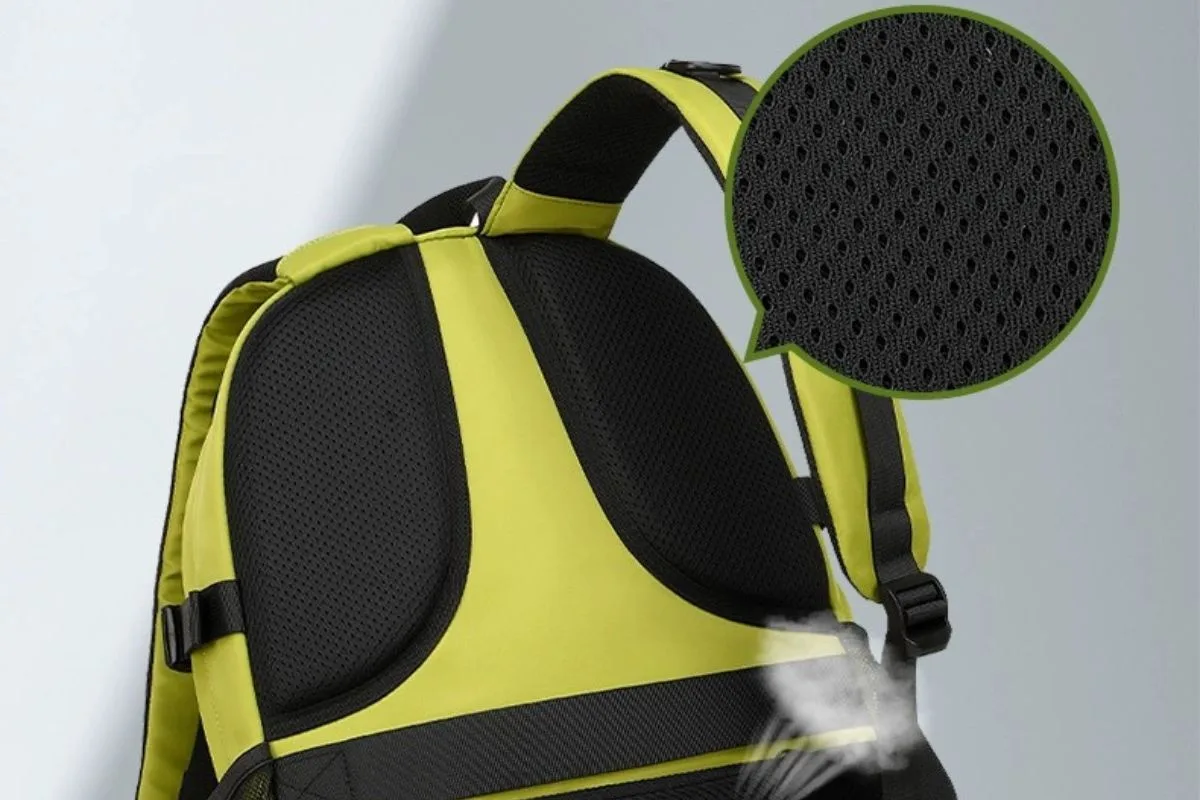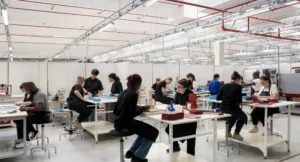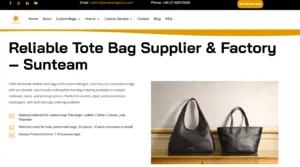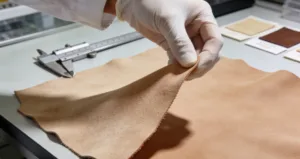Many backpack manufacturers face a crucial question during custom backpack: how to choose the right padding material to ensure maximum comfort for users? The foam padding not only determines the backpack’s support and cushioning performance but also significantly impacts its durability and functionality. From lightweight and breathable EVA foam to high-support PE foam, from soft and skin-friendly PU materials to adjustable air cushion systems—each material has unique advantages tailored for different usage scenarios.
Whether designing everyday commuter backpacks, student bags, professional outdoor packs, or tactical gear, selecting the right foam padding can dramatically enhance user experience. This guide will provide a detailed analysis of 8 common backpack foam padding types, covering their characteristics, ideal applications, and cost-effectiveness. We’ll also offer practical material selection advice to help you create more comfortable and durable backpack products!
Contents
- 1 EVA Foam (Ethylene-Vinyl Acetate)
- 2 PE Foam (Polyethylene): Light and Strong Padding for Backpacks
- 3 PU Foam (Polyurethane): Light, Breathable Backpack Padding
- 4 Open-Cell Foam: Soft, Breathable Padding for Comfort
- 5 Closed-Cell Foam: Stiff, Waterproof Padding for Backpacks
- 6 Dual Density Foam: Enhanced Comfort and Support for Backpack Padding
- 7 Gel Padding: Custom Comfort and Great Pressure Relief
- 8 Air Pads: Easy Adjustments for Comfort and Better Airflow in Backpack Padding
- 9 Backpack Padding Foam Selection Guide
- 10 Summary
EVA Foam (Ethylene-Vinyl Acetate)

Key Features: Excellent shock absorption, soft yet supportive, waterproof, deformation-resistant, lightweight and durable, hypoallergenic
Common Backpack Applications: Hiking backpacks, commuter bags, travel backpacks, student backpacks, tactical bags, multifunctional sports backpacks
Cost Range (for reference): Approx. $0.6 – $1.5 USD per component (varies by density, thickness, and whether combined with other materials)
EVA foam, made from a copolymer of ethylene and vinyl acetate, is a closed-cell material widely used in backpack padding, including back panels, shoulder straps, and waist belts. It offers a unique balance of softness and resilience, effectively absorbing shocks and reducing pressure on the body during wear, while also providing reliable support. Compared to other types of foam, EVA is lighter and more resistant to compression, maintaining its shape even after prolonged use. Its excellent waterproof properties help keep the contents of the bag dry by blocking out external moisture. EVA foam also features strong resistance to abrasion, UV rays, and chemical corrosion, making it suitable for use in harsh outdoor environments. Additionally, it is certified hypoallergenic, making it gentle on sensitive skin and unlikely to cause irritation. Due to its versatility and dependable performance, EVA is a popular choice for a wide range of backpack types, from outdoor hiking packs to urban commuter bags and travel backpacks. It is considered a durable and cost-effective padding solution trusted by many custom backpack manufacturers.
PE Foam (Polyethylene): Light and Strong Padding for Backpacks

Key Features: Lightweight, excellent impact resistance, water-resistant, durable, chemical-resistant, insulating, mold-resistant
Common Backpack Applications: Shoulder straps, hip belts, back panels, camera inserts, bike bags, outdoor gear compartments
Cost Range (for reference): Approx. $0.5 – $1.3 USD per component (depends on thickness, density, and processing type such as XLPE)
PE foam (Polyethylene foam) is a closed-cell structure material known for its light weight, durability, and impressive shock-absorbing ability, making it an excellent choice for backpack padding. Whether used in shoulder straps, hip belts, or back panels, PE foam helps evenly distribute weight and cushion impact, reducing pressure points during long periods of wear. One of its standout features is water resistance—it absorbs very little moisture and can even float, making it ideal for bags used in wet or outdoor environments.
High-density PE foam is especially tough and resistant to compression, stretching, and tearing, maintaining its structure even under heavy use. It also resists mold, mildew, and most chemicals, which enhances its longevity and hygiene, particularly in rugged conditions. In addition to impact protection, PE foam provides basic insulation properties, shielding the wearer and contents of the bag from heat and cold.
Cross-linked PE foam (XLPE) is commonly used in performance backpacks because of its improved elasticity and durability. Standard sizes include 1/4″ thickness with 2lb density, which offers a great balance between support and flexibility. It’s available in small sheets like 12″ x 48″, making it easy to integrate into both small-scale DIY projects and large-scale manufacturing.
PE foam is also highly customizable, with different densities and thicknesses available to suit the needs of various backpack types—from minimal daypacks to heavy-duty travel or tactical packs. For heavier loads, denser and thicker foam is recommended, while for casual use, a softer and thinner version can suffice. Environmentally safe variants with certifications are also available, ensuring compliance with safety and health standards. With its adaptability and high performance, PE foam is a reliable and cost-effective material for modern backpack construction.
PU Foam (Polyurethane): Light, Breathable Backpack Padding

Key Features: Lightweight, breathable, shock-absorbing, affordable, UV- and ozone-resistant, flexible firmness options, CertiPUR-US® certified
Common Backpack Applications: Daypacks, commuter bags, travel backpacks, mid-range outdoor packs
Cost Range (for reference): Approx. $0.4 – $1.0 USD per component (based on thickness, ILD value, and quality grade)
PU foam (Polyurethane foam) is an open-cell, lightweight padding material widely used in backpacks for its soft feel and excellent breathability. Its open-cell structure allows for strong airflow, which helps regulate temperature and manage moisture, especially during long or active wear. This makes PU foam a go-to choice for commuter, travel, or daypacks where ventilation and comfort are important.
Technically, PU foam typically has a density of 1.20–1.25 lb/ft³ and a 25% ILD (Indentation Load Deflection) range of 17.3 ± 3 to 50.5 ± 3 lb, giving manufacturers flexibility to choose firmer or softer cushioning based on use. A minimum sag factor of 1.20 also indicates decent resilience, meaning the foam won’t flatten too quickly under regular use. While it offers some thermal insulation, PU foam is not designed for extreme temperature protection.
PU foam is also resistant to UV rays and ozone, which helps maintain its integrity when exposed to sunlight or air for extended periods. It’s suitable for general sealing of air, dust, and water, offering moderate protection to the backpack’s contents. Importantly, it meets California TB 117-2013 flammability standards and is often CertiPUR-US® certified, ensuring the foam is made without harmful chemicals and respects environmental safety.
While PU foam excels in comfort and cost-effectiveness, its durability varies depending on the quality—cheaper grades may lose firmness over time. Still, for casual or urban backpacks, it offers excellent value. It’s also widely used beyond backpacks: in mattress toppers, furniture cushions, and even pet beds—showcasing its versatility.
In short, PU foam is an excellent material choice for well-ventilated, affordable, and lightweight backpack designs.
Open-Cell Foam: Soft, Breathable Padding for Comfort

Key Features: Soft, breathable, springy, compressible, lightweight, skin-friendly
Common Backpack Applications: Shoulder straps, back panels, commuter bags, daypacks, lightweight travel bags
Cost Range (for reference): Approx. $0.35 – $0.9 USD per component (depending on thickness, density, and quality)
This type of foam is lightweight and highly breathable, made up of interconnected air pockets that allow air and moisture to pass through easily. Because of this design, it is soft and flexible, making it especially comfortable in areas that touch the body directly, like shoulder straps and back panels.
Its excellent breathability helps regulate heat and sweat, which is particularly useful in warm climates or during long periods of carrying a backpack. Compared to closed-cell foam, this foam compresses more easily—often down to less than half its original thickness. While this increases comfort and flexibility, it also means it may not provide enough support for heavy loads and may wear out faster over time.
This foam comes in various densities, and manufacturers adjust the cushioning depending on the intended use. It feels soft and comfortable from the moment you start using it, making it a popular choice for backpacks, school bags, and light commuter packs. However, it is less durable than more structured foams like EVA or PE, especially under high-pressure conditions.
Beyond backpacks, this foam is widely used in furniture, bedding, sports gear, medical supports, and automotive interiors—anywhere comfort and breathability are top priorities. You can often identify it by a simple squeeze test: if the padding compresses easily and quickly bounces back, it’s likely this kind of foam.
In summary, this lightweight and soft foam is ideal for applications requiring comfort and breathability with light to moderate loads, especially in contact areas, offering excellent comfort at an affordable price.
Closed-Cell Foam: Stiff, Waterproof Padding for Backpacks

Key Features: Firm, waterproof, supportive, durable, stain-resistant, insulating
Common Backpack Applications: Back panels, hip belts, internal frames, sit pads, ultralight structures
Cost Range (for reference): Approx. $0.6 – $1.5 USD per component (depending on thickness, density, and material type)
Closed-cell foam is a firm, dense, and highly durable padding material made from sealed air cells that are packed tightly together. Unlike open-cell foam, it does not allow air or water to pass through, making it naturally waterproof and long-lasting. Its strong structure provides excellent support and shape retention, especially in backpacks carrying heavy loads.
The foam’s resistance to water, sweat, mold, and bacteria makes it ideal for outdoor conditions and rugged use. Even when exposed to rain or intense sweat, closed-cell foam doesn’t soak or soften, helping it maintain its integrity over time. It’s also great for blocking temperature changes, offering thermal insulation and some level of sound and vibration absorption—a benefit for travel or outdoor adventure packs.
There are different types of closed-cell foams commonly used in backpack design. EVA foam (Ethylene-Vinyl Acetate) offers excellent shock absorption and is often used in shoulder straps, hip belts, and back panels. PE foam (Polyethylene) is lighter and more rigid, making it a smart choice for ultralight frame supports and base padding.
Closed-cell foam also plays a role in multi-function designs—for example, in sit pads that double as backpack support panels. While it doesn’t compress as easily as open-cell foam, it compensates with stability, protection, and resistance to chemicals and rough environments. It also adds a sleek, smooth finish to many technical backpack designs.
In summary, closed-cell foam is the best choice for structural support, water resistance, and rugged use. According to the American Society for Testing and Materials (ASTM), if your priority is durability over softness—especially for heavy loads or wet conditions—this is the material to choose for reliable performance in the long run.
Dual Density Foam: Enhanced Comfort and Support for Backpack Padding

Key Features: Layered construction combining soft comfort and firm support, excellent pressure distribution, durable, breathable, and skin-friendly materials.
Common Backpack Applications: Premium shoulder straps, hip belts, custom backpack padding, high-end hiking and travel backpacks.
Cost Range (for reference): Approximately $1.2 – $2.5 USD per component depending on thickness and material quality.
Dual Density Foam features multiple layers that balance softness and firmness. Typically, a dense closed-cell base provides strong support and durability, while a softer open-cell or medium-density layer ensures comfort and breathability next to the skin. This layered design effectively distributes pressure, reducing discomfort during long hikes or heavy loads. The foam maintains its shape well over time, offering long-lasting cushioning. Its versatility makes it a favorite for premium backpacks, especially in shoulder straps and hip belts where both comfort and support are essential. Some versions include eco-friendly, non-toxic materials that are gentle on skin and environmentally conscious. Overall, Dual Density Foam delivers a superior combination of comfort, support, and durability, ideal for demanding outdoor use.
Gel Padding: Custom Comfort and Great Pressure Relief

Key Features: Molds to body shape using heat, excellent weight distribution, dual-layer gel and foam construction, stable fit, water-resistant and hypoallergenic covers.
Common Backpack Applications: Daypacks, travel backpacks, specialty packs focused on comfort and pressure relief.
Cost Range (for reference): Typically $2.0 – $4.0 USD per component depending on gel type and cover materials.
Gel Padding uses a core of temperature-reactive gel that molds to your body heat, providing customized cushioning and excellent pressure relief. Often combined with foam layers, it balances softness and support well. The gel core spreads load evenly, reducing pressure points on shoulders and hips, which is especially helpful on longer trips or with heavy loads. Its stable fit prevents padding from shifting, improving posture and backpack security. Many gel paddings come with easy-care, water-resistant covers that stretch and protect sensitive skin, with hypoallergenic options available. Though heavier than some foam types, gel padding excels in comfort and durability, making it ideal for daypacks and travel bags where comfort is prioritized over ultra-lightweight design.
Air Pads: Easy Adjustments for Comfort and Better Airflow in Backpack Padding

Key Features: Adjustable firmness by inflating or releasing air, excellent airflow for cooling, even pressure distribution, lightweight and packable.
Common Backpack Applications: Hiking backpacks, ultralight packs, backpacks for warm or humid climates.
Cost Range (for reference): Typically $3.0 – $6.0 USD per component depending on design and materials.
Air Pads use inflatable chambers to provide customizable cushioning, allowing users to adjust firmness to their preference or load. This personalized comfort is a key advantage over fixed foam pads. The open air circulation helps reduce sweat and heat buildup, keeping the wearer cooler on long hikes or in hot environments. Air pads evenly distribute pressure, reducing sore spots and improving comfort over time. They are lightweight and pack down smaller when deflated, making them ideal for travelers and ultralight backpackers. However, air pads are vulnerable to punctures from sharp objects, though many can be repaired with patches. Overall, air pads combine versatility, breathability, and lightweight performance for users who value adjustable support.
Backpack Padding Foam Selection Guide

| Foam Type | Key Features | Recommended Areas | Ideal Use Cases | Notes |
|---|---|---|---|---|
| EVA Foam | Lightweight, flexible, shock-absorbing | Overall padding, straps, back panel | Outdoor sports, hiking, lightweight packs | Versatile and light |
| PE Foam | Firm structure, durable, good shock absorption | Back panel, bottom | Technical packs, travel bags | Strong support, durable |
| PU Foam | Open-cell, breathable, lightweight | Straps, back panel | Long-duration carry, humid conditions | Excellent airflow |
| Closed-Cell Foam | Firm, water-resistant, good frame support | Laptop/tablet compartments, bottom | Protecting electronics, structural support | Highly protective |
| Open-Cell Foam | Soft, compressible | Straps, back panel | Lightweight packs, children’s backpacks | Very comfortable but less supportive |
| Dual-Density Foam | Combination of soft and firm layers | Straps, hip belts | High-end backpacks, heavy loads | Balanced comfort and support |
| Gel Padding | Body-heat responsive, molds to shape | Straps, hip belts | Heavy load carrying, travel packs | Heavier, very comfortable |
| Air Pads | Adjustable firmness, excellent airflow | Back panel, straps | Adjustable comfort, hot climates | Lightweight but puncture-prone |
Choosing backpack padding foam is like finding the perfect pair of shoes for your back — it needs to fit comfortably while offering solid support. Start by considering how you use your backpack: lightweight, everyday use calls for soft, breathable foams like EVA or PU, while technical or long-haul use benefits from firmer foams like PE or dual-density for durability and support. Match the foam type to the backpack area — closed-cell foam is best for protecting electronics, while softer or dual-density foams suit shoulder straps and hip belts for comfort. Environmental factors and personal needs matter too — air pads offer adjustable comfort and airflow but require care to avoid punctures. A well-balanced combination of different foams ensures your custom backpack delivers both comfort and functionality.
Summary
Choosing the right padding foam for backpacks is a crucial step to enhance product competitiveness. Different usage scenarios call for different solutions—EVA for lightweight designs, PE for high support needs, and dual-density or gel pads for ultimate comfort. Only by precisely matching user needs can you create backpacks that truly stand out!
Optimize your backpack design now! If you’re still unsure about which padding material to choose or need professional customization advice, click to consult our expert team. We’ll provide fit material selection plans and sample support to help you craft comfortable and durable best-selling backpacks!
Let every detail be the reason users fall in love with your product!






